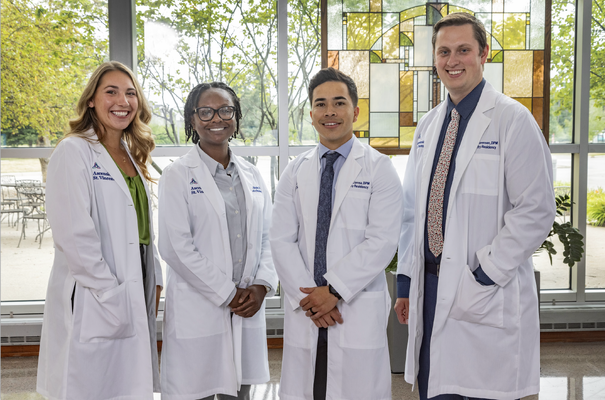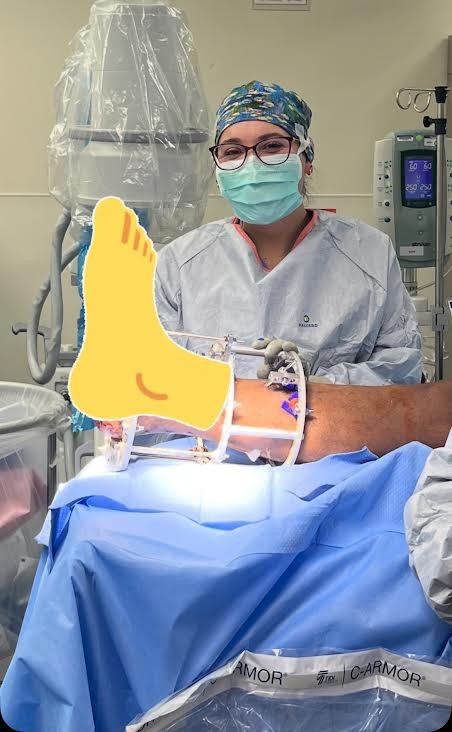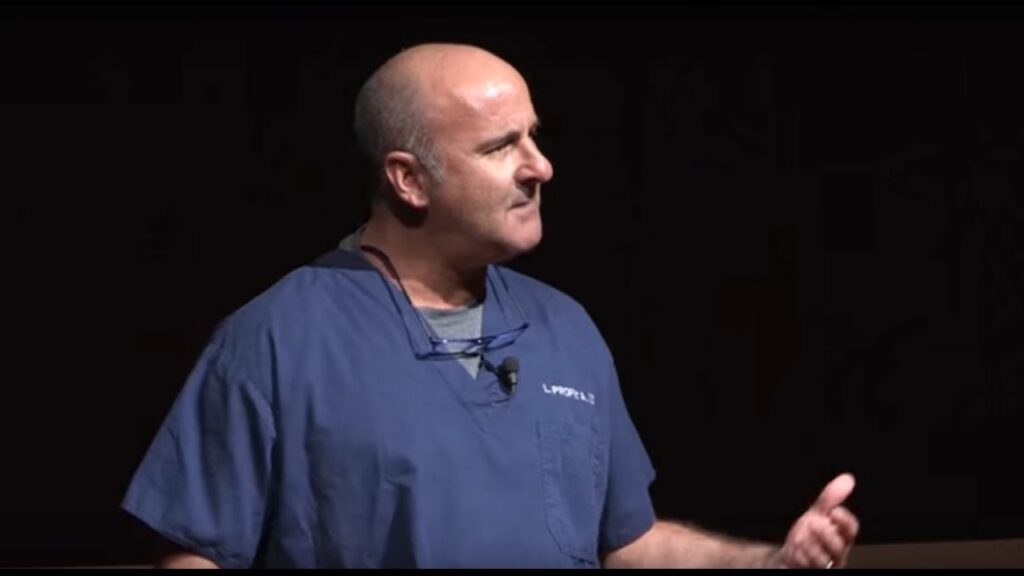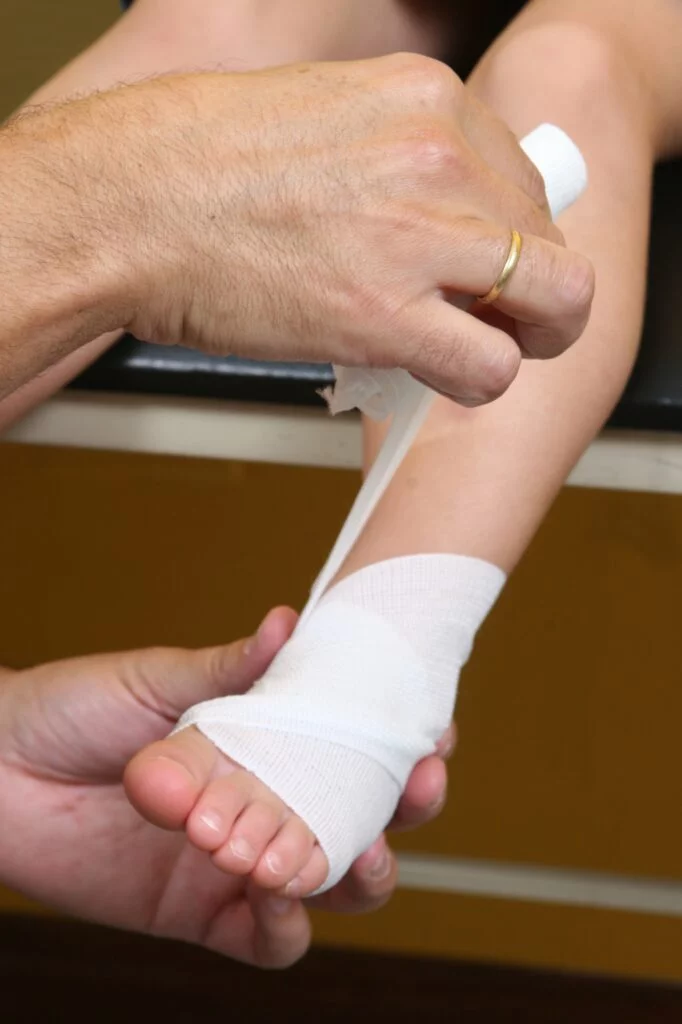In Praise of Podiatry from an ER Doc
You can learn a lot about a patient from their feet. In fact, if you give me your feet and nothing else, the amount of information I can glean from you is astounding. So much so that I think every physician in America, and especially ER docs, need to spend a solid two months rotating with podiatry. One of the first things I do when I see a new patient in the ER is to pull the covers back from over the feet, take a look, a quick feel, and a light whiff of the air.
Are the shoes battered and worn, filthy foul-smelling rot? The patient most likely is homeless or schizophrenic, or perhaps there is ongoing gangrene.
Are the feet perfectly manicured? This is probably a patient of means, mobile with good hygiene, able to reach their toes.
Are they missing toes, scaly, crusted skin, open sores or ulcers, heaped-up nails? The patient probably has long-standing diabetes, obesity, and inability to reach their feet for basic care.
Is there poor perfusion to the toes, are they mottled, poor pulses on the top of the foot or behind the ankle, prolonged capillary refill? They probably have peripheral vascular disease.
Are the feet swollen, is there pitting edema when I press on them? They may have renal failure, heart failure, or lymphatic or venous return issues.
Is there severe pain when I barely touch them or significant inability to feel pain? There might be a spinal lesion or underlying neuropathy.
The list goes on and on, but the amount of information I can get from a quick 15-second look, touch, and distant scent of the feet is profound and under-utilized, and I think our appreciation of the field of podiatry is similarly in need of more regard.
I’ve been head of Emergency Medical Education for more than thirty years now and I’m about to shock you . . . get ready for this.
Of all the residents who have rotated in our ER over the last few years (of which we have many), the best have been podiatry residents. Yep—you heard me right. The hardest working, most driven to learn, the most attentive residents we have had over the last year are all podiatry residents. Not internal medicine, or family practice, general surgery or transitional (going into derm or radiology or anesthesiology) but are podiatry residents. I’m actually starting to think they may be stealing some of the “best and the brightest” from our medical schools. Their aptitude and work ethic, their drive to succeed, in a way reminds me of the old school medical students who have seemed to have faded into the vapor of the American medical past.

As I stated earlier, I have always been somewhat cognizant about how important feet are in the overall maintenance of health and what a good marker they are for the well-being of the individual. And I’m starting to think this appreciation did not arise from a top-down stream of learning from attendings who preceded me in my education but instead percolated up from countless podiatry residents who have rotated with us over the last many years. Listening to their case presentations, how they hone in on the feet when it comes to describing systemic illnesses, how focused they are on how the feet improve mobility, balance, and overall health and well-being, I think I have learned much of this from them and not the other way around. It’s why more hospitals need podiatry residents and the US needs more podiatry students.
So I asked one of our more enthusiastic podiatry residents, Dr. Savannah Santiago, to share some quick facts about feet, things I might not know, and this is what she provided:
- According to the Centers for Disease Control and Prevention (CDC), an estimated 38.4 million adults (11.6%) in the United States had diabetes in 2021.
- While not all individuals with diabetes require podiatric care, all individuals with diabetes should receive regular foot exams and education on proper foot care to prevent complications. The American Diabetes Association recommends that people with diabetes check their feet daily for cuts, redness, swelling, sores, blisters, corns, or calluses.
- Conditions like diabetes, rheumatoid arthritis, peripheral artery disease, and renal disease often present with foot symptoms first.
- All kidney transplants have to be cleared by a podiatrist that they have no chronic foot wounds. (Reference: American Diabetes Association, “Peripheral Neuropathy and Foot Care in Diabetes,” https://diabetes.org)
- Podiatrists prevent amputations and hospitalizations.
Regular podiatric care in diabetic patients has been shown to reduce lower extremity amputations by up to 85%. (Reference: CDC, “Diabetes and Amputations,” https://www.cdc.gov/diabetes/library/features/diabetes-and-amputations.html)
Podiatry reduces healthcare costs:
- A study published in the Journal of the American Podiatric Medical Association showed that podiatric care led to significant cost savings by preventing complications in patients with diabetes. (Reference: J. of the APMA, “Outcomes and Economic Impact of Podiatric Care in Diabetes,” 2011)
- Biomechanics and gait analysis improve overall mobility—this means decreasing fall risks and overall healthcare cost.
- Podiatrists treat sports injuries, structural deformities, and arthritis that directly affect quality of life and independence.
- Our own Indiana Pacers and Fever had a team podiatrist, Dr. Patrick DeHeer, for more than thirty years. (Reference: American Podiatric Medical Association (APMA), “Role of Podiatrist in Musculoskeletal Medicine”)
Podiatry residents undergo specialized surgical training:
- Podiatric surgeons undergo 3+ years of residency focused solely on the lower extremity, offering a level of expertise often unmatched by general orthopedists in foot and ankle pathology.
- Orthopedic residency requires 5 foot and 15 ankle cases while podiatric residency requires 400 at a minimum with an average of 700–1,100 cases completed during podiatric residency in the foot and ankle.
- (Sources: American Association of Colleges of Podiatric Medicine (AACPM), https://www.podiatry.com/news/346/Practice-Perfect-700-Orthopedics-Versus-Podiatry-MAVs, https://www.cpme.org/wp-content/uploads/2023/12/CPME-320-Updated-April-2022-new-logging-code.pdf?utm_source=chatgpt.com)
Podiatry plays a vital role in fall prevention and geriatric care:
- Foot pain, instability, and poor footwear are significant contributors to falls in the elderly—podiatrists help mitigate these risks. (Reference: National Institute on Aging, https://www.nia.nih.gov/health/falls-and-fractures-older-adults)
Podiatry input is essential in sports medicine and injury prevention:
- From weekend warriors to elite athletes, podiatrists help maintain foot and ankle health through orthotics, rehab, and surgical interventions. (Reference: APMA, “Sports Medicine and Podiatry”)
- Podiatrists are considered experts in biomechanics.
Podiatry patients have high satisfaction rates:
- Studies show patients under podiatric care report high satisfaction and improved functional outcomes—especially in chronic foot conditions. (Reference: Health Services Research Journal)
Podiatry as a career:
- There are multiple podiatry schools that are fully integrated with DO/MD programs.
- The job market for podiatrists is favorable, with ample employment opportunities and financial stability. U.S. News ranked podiatry as the #13 best-paying jobs.
- https://explorepodmed.org/what-is-a-doctor-of-podiatric-medicine
- https://www.stepintopodiatry.com/find-a-mentor/
As I have stated before, I have been an ER doc for three and a half decades—I’ve seen a lot of feet. I have come to appreciate how so much of our ability to move through the world and be engaged on just a basic human level requires the ability to walk free of pain. I suspect many of my colleagues harbor an outdated impression that podiatrists are just there to trim calluses and nails, or build orthotics, but this does not do justice to the fact that these are residency and fellowship trained doctors and skilled surgeons. I am certain much of the obesity issues, depression, inability to connect with the world in general may stem from simply not being able to walk free of pain or disability.

It’s time we in medicine take some incremental leaps also—appreciate feet and our podiatric colleagues a bit more, give them a bit more of our attention, advance our understanding as it relates to the total health of the person and what they have to offer.
It’s time we embrace our podiatry colleagues and advance our own holistic aptitude when it comes to feet. Because all our journeys in life . . . usually start with a first step.
Dr. Louis M. Profeta is an emergency physician practicing in Indianapolis and a member of the Indianapolis Forensic Services Board and the Board of Directors of Hooverwood Living. He is a national award-winning writer, public speaker and one of LinkedIn’s Top Voices and the author of the critically acclaimed book, The Patient in Room Nine Says He’s God. For other publications and for speaking dates, go to louisprofeta.com. For college speaking inquiries, contact bookings@greekuniversity.org.



